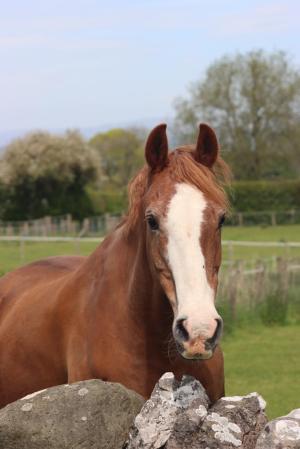
By vet Charlotte Pennington
Atypical myopathy is a severe and often fatal muscle disorder caused when horses eat sycamore seeds and seedlings. In recent years we seem to be seeing increased numbers of cases.
Sycamore seeds fall onto pastures in the autumn/winter, then germinate into seedlings in the spring. Not all seeds are toxic, only some contain the toxin Hypoclygin A (HGA) which is responsible for causing the disease.
It is unknown why, but some horses are more susceptible than others. Unfortunately, the disease is usually fatal with a 50:50 chance of survival at best. The HGA toxin stops energy production in muscles primarily affecting heart, respiratory and skeletal muscles.

It results in a range of symptoms. Horses may appear depressed/dull with low hanging heads and show a general weakness, and struggle to walk/stand. They may be struggling to breathe.
Horses are also usually very sore and have muscle tremors. Varying signs of colic may occur but usually horses still have an appetite. The horse's urine may appear brown or red, which is caused by a pigment called myoglobin released from muscle cells when they are damaged.
Often symptoms are progressive worsening over time. Horses may present as a sudden death with no prior symptoms.
Diagnosis confirmation can take several days, but usually it is based on clinical signs and progression alongside history of exposure. Various samples may be needed including blood samples to check for the HGA toxin and other indicators such as kidney function, muscle enzymes etc. The enzymes we detect indicating muscle damage don't rise immediately in bloods so repeated samples may be needed. One of the most concerning and reliable indicators is the presence of brown or red urine.
Where there is suspicion of sycamore toxicity, treatment is usually started asap even before confirmation of diagnosis. Horses deteriorate rapidly and require intensive treatment and nursing.
Treatment is supportive including intensive fluid therapy, powerful painkillers and anaesthetics and supplementary vitamins and minerals. Where possible it is best to refer to a specialist Equine Hospital for treatment promptly while the horse is still fit enough to travel. Symptoms are progressive and usually worsen over the first 24-48 hours.
Whilst it is often fatal, horses that are still alive 5 days after onset of symptoms have a chance of recovery however they may take several months to recover.
Research into the condition is still ongoing and recommendations are ever changing. There are some recommendations for prevention. During the autumn and if the pasture is bare of food, it is wise to ensure there is plenty of supplementary forage for the horses to prevent them scavenging for food, reducing the temptation and risk of ingesting seeds.
Keeping stocking densities low also helps. It is advisable to clear any fallen leaves and seeds from the trees away from any grazing areas. It is good to check any surrounding paddocks for any trees, seeds or seedlings as the ‘helicopter’ type seeds can travel with the wind. Fencing off areas where seedlings fall may also help. You can also test the seeds and seedlings for the presence of HGA toxin to check the levels in your own horse’s pasture. Knowing if the toxin is present on your pasture can help manage the risk. Mowing and spraying may reduce the risk but does not eliminate it completely.
It is recommended not to use pastures with seeds for making hay/forage. Harrowing can increase the risk by spreading seedlings. If sycamore seeds are present on pasture it is recommended to limit the grazing time to 6 hours per day.
Where there is any concern it is recommended to seek prompt veterinary advice!